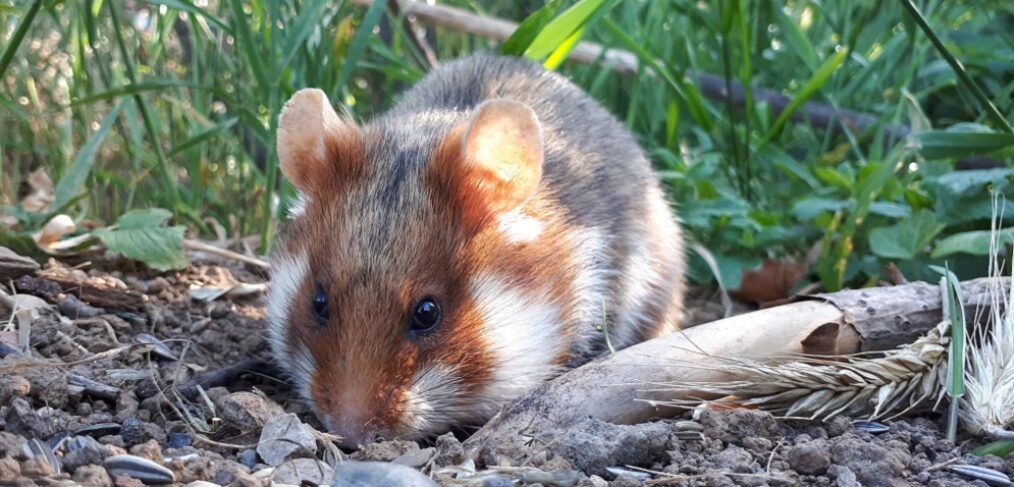
species of the week #63 – european hamster
Until the 1980s, the hamster was considered a crop pest and was relentlessly persecuted at times. However, its sharp decline is the result of ever larger, monotonous fields, the use of heavy harvesting machinery and the cultivation of supposedly worthless areas.
| Distribution status | Very rare, strongly declining |
| Remaining deposits | Upper Rhine Graben |
| Last sightning in rhineland-palatinate | current |
| Habitat | Cereal fields |
| Threat | Land use, intensive agriculture |
As an original inhabitant of the vast steppe landscapes of Eastern Europe, the european hamster now lives mainly in cereal fields on fertile loess soils, which are not at all dissimilar to a steppe landscape.
In Rhineland-Palatinate, the european hamster is found in the Upper Rhine Plain, the loess areas in the northern Vorderpfalz and in Rheinhessen. For the most part, however, there are only 0.1 to 0.5 animals per hectare – not much for an animal that has to find a conspecific within a radius of 300 to 400 m in order not to be literally alone in the open countryside. In the core distribution areas in Rheinhessen and especially around Mainz, there are still up to 10 animals per hectare.
For the european hamster, which not only spends its six-month hibernation period but also most of its active time in a burrow up to 2 m deep with its own nursery den, storage cellar and toilet cave, the ground is more than just a substrate. It is the actual habitat. Accordingly, uncultivated, uncompacted soil is important.
Since the european hamster has an above-ground nocturnal action radius of about 200-500 m, a good habitat is characterised by the fact that several crops on different fields are accessible. Ideally, the animals do not have to cross bare areas where they are a found meal for aerial predators. The small-parcelled arable farming of the last centuries provided a much better habitat for the hamster; in the meantime, habitat diversity and the occurrence of bushes and hedges on agricultural land have been significantly reduced, among other things, by land consolidation.
The structural change in agriculture towards mechanisation and larger, more uniform cultivated areas poses a major problem for the hamster, also because these monocultures are often harvested before the animal’s hibernation in September. Now neither the grain stock for the winter is filled, nor is the hamster’s burrow protected from above. Therefore, field forage plants such as alfalfa or clover that provide permanent cover are also important for him.
But it is not only agriculture that is changing our landscape. Roads and housing developments are also cutting up and shrinking the hamster’s realm from day to day. Its habitat is popular with planners and architects because of its allegedly low ecological value – shopping centres and industrial estates are often located where previously waving wheat fields served as the hamster’s habitat.
Politically necessary:
- Reduction of land consumption to net zero
- Extensification of agriculture
- Promotion of small-scale agriculture
Click here for more exciting species of the week
Photo By SgH Vienna – Own work, CC BY-SA 4.0, https://commons.wikimedia.org/w/index.php?curid=90037259
